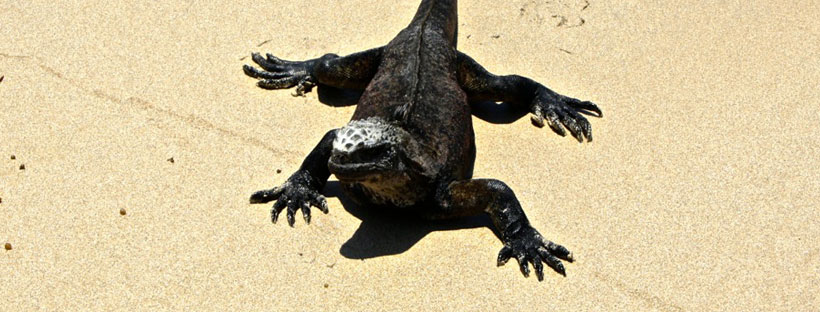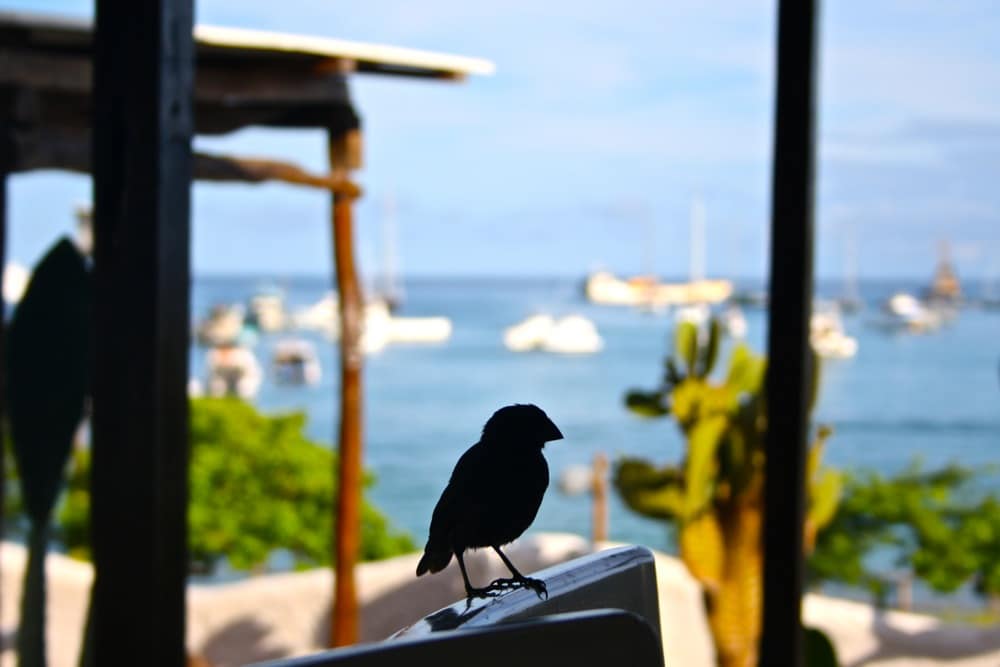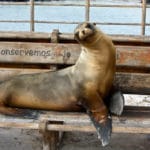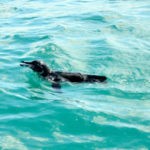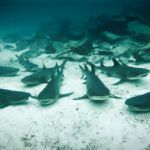It’s a dream destination for many: the pristine islands of The Galápagos, haven to some of the world’s most unique and rare species of animal – or so we thought. There were certainly pristine sections of the islands but there were also roadworks in Puerto Ayora, broken beer bottles at Cerro Tijeretas, plastic bottles on Tortuga Bay and, saddest of all, a baby seal playing with a plastic spoon.
We couldn’t help but ask if The Galápagos were better left alone, untouched and unsullied by tourism. We are in no position to advise future tourists against visiting, but we can show you how to do it in as eco-friendly a way as possible.
First, take heart that tourists have unmonitored access to only a tiny part of the islands. Ninety-seven percent of the island is protected by the National Park and the 70 registered visitor sites comprise only 0.01 percent of the landmass [1]. Second, every tourist must pay a $100 entrance fee. While a large portion of tourism money goes to mainland Ecuador, about $63m contributes to the local economy and conservation efforts on the islands every year [2]. Finally, if you are consciously aware of your footprint at all times, you can greatly reduce the effects of your visit. Here’s how.
Consider exploring by land
The National Park restricts the size of boats to 100 passengers, but even 100 people can overload a beach when disembarking at once. Instead of taking a big cruise, consider exploring the islands by land and taking public ferries to the other islands. This has the added benefit of contributing to the local economy instead of an international cruise company.
Stick to the inhabited islands
Part of the lure of The Galápagos is that large parts are untouched by tourists – but if you’re visiting the uninhabited islands, they’re no longer untouched by tourists(!) It is perfectly possible to see all the main Galápagos creatures on the inhabited islands of Santa Cruz, San Cristobal, Isabela and Floreana, and in the surrounding waters, so consider visiting only these.
Conserve water at all costs
Water is very precious on the islands so make sure you cover the basics: short showers and certainly no baths, turn off the tap when brushing your teeth and use your toilet flush sparingly.
Dispose of waste properly
Trash of all types should be kept on your person and deposited in the correct recycling containers on your return to the populated areas. Under no circumstances, leave plastic behind. When using the bathroom, don’t flush your paper down the toilet; instead, deposit it in a wastepaper bin.
Follow quarantine procedures
Fully cooperate with the environmental inspection and quarantine services during your stay. Introduced plants, animals and certain types of food which are not native to the islands are a very serious threat to the Galápagos ecosystems so take this seriously.
Don’t smoke
Smoking and campfires are forbidden within the National Park. They are a danger to the flora and fauna, so refrain.
Choose activities carefully
Any type of fishing from tour boats is forbidden. In addition, motorised aquatic sports, mini-subs and aerial tourism are not permitted in the National Park. If you see this, report it to the National Park Service. (I’m from East London so I’m no grass but, sometimes, it’s the right thing to do.)
Buy souvenirs carefully
Souvenirs made of black coral, shells, volcanic rocks, animal parts and native woods are illegal to buy and/or remove from the islands. If you see this, report it.
Stay within marked trails
Trails are marked out to protect the wildlife. If you veer off, you will likely upset the natural balance on the islands, so resist the temptation. Areas inside the National Park can only be visited with a licensed Galápagos National Park Guide, so don’t try to access these on your own.
Keep your distance from the wildlife
Do not touch them or allow them to touch you.
Do not feed the wildlife
We were joined by a group of finches at breakfast and were tempted to feed them our crumbs, but resisted. The animals can feed themselves. Don’t alter the natural balance on the islands.
Do not use flash photography on the wildlife
This can alter their natural way of life. Professional photographers and filmakers have to have National Park authorisation.
Only use authorised camping sites
You must get authorisation 48 hours in advance of setting up camp. Contact the National Park Service prior to visiting.
Visit the interpretation centres
Spend time at non-profits like the Charles Darwin Research Center to find out more about the history of the islands. The Interpretation Center on San Cristobal is particularly good so set aside some time to get there.
Choose eco-friendly suppliers
If you’re booking a hotel (or any type of supplier), have a look at their environmental efforts. Royal Palm on Santa Cruz and Casa Opuntia on San Cristobal are safe bets if you have the budget. If you see something that grates, don’t stay silent. On San Cristobal, we saw a bus with ‘Eco-friendly Tours’ plastered across the side, which sat stationary with the engine on for 10 minutes. If you’re on a bus like this, say something!
Pick it up
If you see a plastic bottle on the beach or rubbish at the side of the street, put it in a bin. You’ll be doing your part in helping to sustain the beauty of the islands.
Finally, if you’re not genuinely interested in nature, consider not going
There is a danger that The Galápagos are becoming a mass tourist destination, not for wildlife enthusiasts but just people who want a good holiday. If this is you, consider going somewhere else instead.
Find out more: galapagos.org
